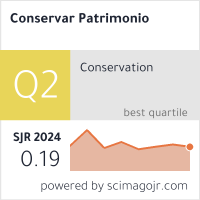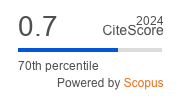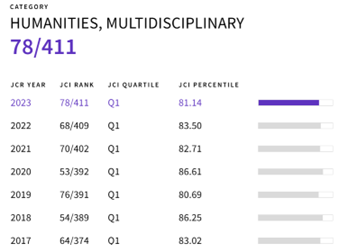Implementação de HBIM para a gestão, conservação e divulgação de um edifício patrimonial protegido do século XX: o Real Club Náutico de Donostia-San Sebastián
DOI:
https://doi.org/10.14568/cp42088Palavras-chave:
Real Clube Náutico de San Sebastián (RCNSS), HBIM, Movimento Moderno, Arquitetura Patrimonial, Conservação, ReconstruçãoResumo
O Real Club Náutico de San Sebastián (1929), Bem Cultural desde 2001, é um marco do Movimento Moderno na Espanha. No entanto, sua conservação enfrenta desafios devido à dispersão documental e à sua singular condição de edifício patrimonial do século XX em uso ativo como clube privado com espaços públicos. Este estudo propõe, através do desenvolvimento de um modelo 3D HBIM (Historic Building Information Modeling), um sistema de parametrização e integração de dados documentais, históricos e construtivos, que melhore a gestão, conservação e difusão do imóvel. A compilação e classificação bibliográfica, a organização dos elementos construtivos do modelo em diferentes fases histórico-construtivas e a identificação de processos patológicos no estado atual permitem a rastreabilidade histórica do edifício e o intercâmbio de informações entre os agentes envolvidos. Melhora, também, a tomada de decisões e oferece novas oportunidades para a divulgação e valorização do bem, contribuindo para sua preservação a longo prazo.
Downloads
Referências
1. García Moreno, J.; León Cascante, I.; Sagarna Aranburu, M., ‘Procesos para la creación del modelo HBIM de un edificio patrimonial protegido del siglo XX. El Real Club Náutico de Donostia-San Sebastián’, EGE-Expresión Gráfica en la Edificación 21 (2024) 4-26, https://doi.org/10.4995/ege.2024.22199.
2. Urkia Etxabe, J. M., RCNSS, 125 años en la mar, 1896-2021: historia del Real Club Náutico de San Sebastián_COMPLETO, Real Club Náutico San Sebastián, San Sebastián (2021).
3. Martínez, J. J. P.; Laka, M. S.; Cascante, I. L., ‘El proceso experimental de composición del color en el Real Club Náutico de San Sebastián, edificio polícromo’, EGA : revista de expresión gráfica arquitectónica 26(42) (2021) 168-179, https://doi.org/10.4995/ega.2021.13240.
4. Ruano Hernansanz, M. Á., ‘El ‘yate’ elevado a ‘paquebote’. Historia del Real Club Náutico de San Sebastián más allá del mito ‘lecorbuseriano’, 1905-1929’, Cuadernos de Proyectos Arquitectónicos 11 (2021) 32-45, https://doi.org/10.20868/cpa.2021.11.4823.
5. Sanz Esquide, J. Á., Real Club Náutico de San Sebastián, 1928-1929 José Manuel Aizpúrua y Joaquín Labayen, Medusa - Colegio de Arquitectos de Almería, Almería (1995).
6. Medina Murua, J. Á., José Manuel Aizpúrua y Joaquín Labayen, 1a ed., COAVN Delegación de Gipuzkoa, San Sebastián (2011).
7. Medina Murua, J. A., ‘Un barco de Hormigón. El día que Le Corbusier visitó San Sebastián’, Lars: cultura y ciudad 8 (2007) 49-53.
8. Murphy, M.; McGovern, E.; Pavia, S., ‘Historic Building Information Modelling – Adding intelligence to laser and image based surveys of European classical architecture’, ISPRS Journal of Photogrammetry and Remote Sensing 76 (2013) 89-102, https://doi.org/10.1016/j.isprsjprs.2012.11.006.
9. Baik, A., ‘From point cloud to Jeddah Heritage BIM Nasif Historical House – case study’, Digital Applications in Archaeology and Cultural Heritage 4 (2017) 1-18, https://doi.org/10.1016/j.daach.2017.02.001.
10. Jordan-Palomar, I.; Tzortzopoulos, P.; García-Valldecabres, J.; Pellicer, E., ‘Protocol to manage heritage-building interventions using Heritage Building Information Modelling (HBIM) ’, Sustainability 10(4) (2018) 908, https://doi.org/10.3390/su10040908.
11. Hossain, M. A.; Yeoh, J. K. W., ‘BIM for existing buildings: potential opportunities and barriers’, IOP Conference Series: Materials Science and Engineering 371 (2018) 012051, https://doi.org/10.1088/1757-899X/371/1/012051.
12. Castellano-Román, M.; Pinto-Puerto, F., ‘Dimensions and levels of knowledge in Heritage Building Information Modelling, HBIM: the model of the Charterhouse of Jerez (Cádiz, Spain) ’, Digital Applications in Archaeology and Cultural Heritage 14 (2019) e00110, https://doi.org/10.1016/j.daach.2019.e00110.
13. Liu, J.; Willkens, D. S.; Foreman, G., ‘An introduction to technological tools and process of Heritage Building Information Modeling (HBIM) ’, EGE-Expresión Gráfica en la Edificación 16 (2022) 50-65, https://doi.org/10.4995/ege.2022.17723.
14. Akın, Ş.; Gürsel Dino, İ.; Savaş Sargın, A., ‘Heritage building information modelling for the conservation of 20th century modernist architecture’, METU Journal of the Faculty of Architecture 39(1) (2022) 1-22, https://doi.org/10.4305/METU.JFA.2022.1.1.
15. Maietti, F.; Zattini, A., ‘Documentation, analysis and representation of modernistheritage through building information modeling’, The International Archives of the Photogrammetry, Remote Sensing and Spatial Information Sciences XLII-2/W15 (2019) 727-734, https://doi.org/10.5194/isprs-archives-XLII-2-W15-727-2019.
16. Fernandes Dionizio, R.; Murphy, M.; Dezen-Kempter, E., ‘Multi-scale documentation of modern Brazilian architecture: an HBIM-HGIS approach’, International Journal of Architectural Heritage April (2025) 1-18, https://doi.org/10.1080/15583058.2025.2492243.
17. Morganti, R.; Tosone, A.; Di Donato, D.; Abita, M., ‘HBIM and the 20th century steel building heritage – a procedure suitable for the construction history in Italy’, The International Archives of the Photogrammetry, Remote Sensing and Spatial Information Sciences XLII-2/W9 (2019) 515-522, https://doi.org/10.5194/isprs-archives-xlii-2-w9-515-2019.
18. Díaz Parrilla, S.; Sanchez Fernandéz, A. J.; Torre Cantero, J. L. D. L., ‘An approach to HBIM methodology applied to the conservation of altarpieces: two case studies in the Canary Islands’, Conservar Património 42 (2023) 81-87, https://doi.org/10.14568/cp27293.
19. Angulo-Fornos, R.; Castellano-Román, M.; Pinto-Puerto, F., ‘Estrategias de modelado patrimonial en HBIM, aplicación a la lectura estratigráfica del muro de fachada del cuadrante renacentista de la catedral de Sevilla’, Arqueología de la Arquitectura 18 (2021) e109, https://doi.org/10.3989/arq.arqt.2021.001.
20. Korro, J.; Valle-Melón, J. M.; Rodríguez Miranda, Á., ‘Documentary data collection: an initial step for information management in the conservation and restoration of cultural heritage’, Conservar Património 45 (2023) 21-35, https://doi.org/10.14568/cp27370.
21. Ivanov, K., ‘Digital three-dimensional architectural survey of traditional Bulgarian houses − Architectural BIM from point cloud survey data’, Conservar Património 36 (2021) 36-45, https://doi.org/10.14568/cp2019027.
22. Fernández, A. (coord.), BIM aplicado al Patrimonio Cultural. Documento 14. Guía de usuarios BIM, Building SMART Spain Chapter, s.l. (2018), https://www.researchgate.net/publication/330183791_BIM_aplicado_al_Patrimonio_Cultural_Documento_14_Guia_de_usuarios_BIM_Building_SMART_Spain_Chapter (acesso 2025-04-25).
23. Holmström, J.; Ketokivi, M.; Hameri, A., ‘Bridging practice and theory: a design science approach’, Decision Sciences 40(1) (2009) 65-87, https://doi.org/10.1111/j.1540-5915.2008.00221.x.
24. Takeda, H.; Veerkamp, P.; Yoshikawa, H., ‘Modeling Design Process’, AI Magazine 11(4) (1990) 37-48, https://doi.org/10.1609/aimag.v11i4.855.
25. Prieto Rodríguez, M. A.; March Cerdá, J. C., ‘Paso a paso en el diseño de un estudio mediante grupos focales’, Atención Primaria 29(6) (2002) 366-373, https://doi.org/10.1016/S0212-6567(02)70585-4.
26. Manžuch, Z., ‘Ethical issues in digitization of cultural heritage’, Journal of Contemporary Archival Studies 4 (2017) article 4, http://elischolar.library.yale.edu/jcas/vol4/iss2/4 (acesso 2025-07-05)
27. Rouhani, B., ‘Ethically digital: contested cultural heritage in digital context’, Studies in Digital Heritage 7(1) (2023) 1-16, https://doi.org/10.14434/sdh.v7i1.35741.
28. Wagner, A.; De Clippele, M.-S., ‘Safeguarding cultural heritage in the digital era – a critical challenge’, International Journal for the Semiotics of Law - Revue internationale de Sémiotique juridique 36(5) (2023) 1915-1923, https://doi.org/10.1007/s11196-023-10040-z.
29. es.BIM, Guía para la elaboración de un PEB (2018), https://cibim.mitma.es/recursos-cibim/otros-recursos (acesso 2025-05-02).
30. es.BIM, Generación de Modelos: Guía de Modelado de Arquitectura (2018), https://cibim.mitma.es/recursos-cibim/otros-recursos (acesso 2025-05-02).
31. Pedro Busto Projectia S.L.P.U., Manual para la introducción de la metodología BIM aplicado a la intervención en Bienes Inmuebles declarados BIC, Ministerio de Cultura y Deporte, Pamplona (2021), https://habitatge.gva.es/es/web/arquitectura/bim/recursos/-/asset_publisher/2QECYOWFrAZb/content/manual-bim-en-inmuebles-declarados-bic (acesso 2025-05-03).
32. Brumana, R.; Stanga, C.; Banfi, F., ‘Models and scales for quality control: toward the definition of specifications (GOA-LOG) for the generation and re-use of HBIM object libraries in a Common Data Environment’, Applied Geomatics 14(S1) (2022) 151-179, https://doi.org/10.1007/s12518-020-00351-2.
33. Da Costa, F. C. A.; Xavier Junior, E. D.; Borda, A. D. S. A., ‘A doo to access HBIM: didactic aspects to advance in the level of detail (LoD), geometry (LOG) and information (LOI) ’, in Blucher Design Proceedings 12 (2024) 206-217, https://doi.org/10.5151/sigradi2023-358.
34. Brumana, R.; Della Torre, S.; Previtali, M.; Barazzetti, L.; Cantini, L.; Oreni, D.; Banfi, F., ‘Generative HBIM modelling to embody complexity (LOD, LOG, LOA, LOI): surveying, preservation, site intervention—the Basilica di Collemaggio (L’Aquila) ’, Applied Geomatics 10(4) (2018) 545-567, https://doi.org/10.1007/s12518-018-0233-3.
35. Sagarna, M.; Otaduy, J. P.; Mora, F.; Leon, I., ‘Analysis of the state of building conservation through study of damage and its evolution with the state of conservation assessment BIM Model (SCABIM) ’, Applied Sciences 12(14) (2022) 7259, https://doi.org/10.3390/app12147259.

Downloads
Publicado
Como Citar
Edição
Secção
Categorias
Licença
O presente trabalho é distribuído nos termos da Licença Creative Commons (CC BY-NC 4.0) que permite a utilização, partilha e reprodução para fins não comerciais e sem modificações, desde que o autor e fonte original sejam citados.
O Copyright permanece com os autores.






